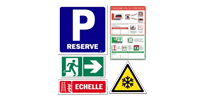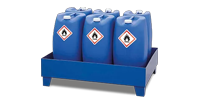Did you know that European standards for safety gloves are crucial for ensuring the safety and protection of your colleagues and employees? If you are a professional in the building or artisan sector concerned about the safety of your employees, don’t miss out on this article.
In this article, we will provide you with everything you need to know about European standards for safety gloves, including the most important certifications, key requirements, and the impact on regulatory compliance. With this essential information, you can ensure the safety of your employees and avoid regulatory sanctions.
Safety gloves play a prominent role among the Personal Protective Equipment family. However, these PPE are subject to numerous certifications and standards in Europe. These standards are defined by various institutions that establish specific specifications for the design, manufacture, use, and maintenance of personal protective equipment, including safety gloves.
We understand that unraveling the truth from fiction can seem insurmountable at times, so we have decided to write this article for you. Discover the most important standards in Europe here.
EN 420 Standard: A cornerstone in European certification
The EN 420 standard is a major certification for the design and sizing of protective gloves. This rigorous standard defines general requirements that cover aspects such as dexterity, ergonomics, comfort, and compatibility with other personal protective equipment. It is considered the cornerstone of the standards governing safety gloves. In this sense, it defines the main regulatory guidelines and is complemented by other standards:
- EN 407: Protection against thermal risks related to fire;
- EN 388: Prevention of mechanical risks;
- EN 511: Protection against thermal risks related to cold;
- EN 374: Related to chemical and industrial risks.
The EN 420 standard requires that protective gloves be designed to offer optimal dexterity and comfort, while maintaining a certain ergonomics to ensure good grip and easy manipulation. Gloves must also be compatible with other personal protective equipment to ensure complete protection against potential risks.
Moreover, this standard requires that gloves be tested for their ability to provide optimal dexterity and comfort, which ensures users that they can perform tasks with task security.
In summary, the EN 420 standard is an essential certification to ensure the design and sizing of protective gloves. This standard establishes rigorous requirements for the design, manufacture, and evaluation of gloves, which ensures the safety and comfort of workers in hazardous environments. Employees and employers can be confident that gloves conforming to this standard offer adequate protection against potential risks, which contributes to ensuring their safety in the workplace.
If you want to learn more about the EN 420 standard, I recommend that you read this article that I have written for you: EN 420 Standard: All You Need to Know About General Requirements for Safety Gloves.
EN 388 Standard: Minimizing mechanical accidents
The EN 388 standard is a complementary certification to EN 420 that helps regulate requirements for protective gloves against mechanical risks such as cuts, punctures, tears, and/or abrasions. This rigorous standard defines testing methods that accurately evaluate the gloves’ resistance to these various types of mechanical risks.
The EN 388 certification first requires gloves to be tested for their ability to resist mechanical risks. Testing methods include cut resistance, puncture resistance, tear resistance, and abrasion resistance tests. These tests accurately evaluate the gloves’ resistance to these various types of mechanical risks, and ensure that if your safety gloves are EN 388 certified, your personal protective equipment is safe.
Furthermore, this standard also requires gloves to be tested for their ability to provide optimal dexterity and comfort, which inevitably derives from the EN 420 standard, ensuring that workers can perform their tasks safely and precisely.
Ultimately, the EN 388 standard is a crucial certification to ensure the resistance of protective gloves against mechanical risks. This standard establishes rigorous requirements for the design, manufacture, and evaluation of gloves, ensuring the safety and comfort of your employees in hazardous environments. Your teams can be assured that gloves conforming to this standard offer adequate protection against mechanical risks, contributing to their safety in the workplace.
The EN 374 standard is the certification that regulates safety gloves and protection against chemical, microbiological, and industrial risks. This rigorous standard defines testing methods that allow for precise evaluation of the resistance of gloves to permeation, degradation, and penetration of chemicals, which goes beyond simple measures of protection against chemicals. It is thanks to this standard that we can guarantee safety gloves that protect against exposure to one or more hazardous chemical agents.
The EN 374 standard requires gloves to be tested for their ability to resist permeation by hazardous chemicals, including corrosive and toxic chemicals. Testing methods include resistance to permeation, degradation, and penetration, which allow for precise evaluation of glove resistance to hazardous chemicals.
Additionally, this standard also requires gloves to be tested for their ability to provide optimal dexterity and comfort, which inevitably stems from the EN 420 standard, ensuring that workers can perform their tasks safely and accurately.
Finally, the EN 374 standard is a key certification for ensuring the resistance of safety gloves and protection against chemical, microbiological, and industrial risks. This standard establishes rigorous requirements for the design, manufacture, and evaluation of safety and protection gloves, ensuring the safety and comfort of workers in hazardous environments. Workers can be assured that gloves conforming to this standard provide adequate protection against chemical risks, contributing to their safety in the workplace.
The EN 511 standard: Effectively protect your employees from cold-related risks
The EN 511 standard is essential for regulating the resistance of protective and work gloves to cold. The thermal risk is not negligible, and this rigorous standard allows for a precise evaluation of protection methods, which goes beyond simple temperature resistance measures. This standard requires gloves to be tested for their ability to withstand heat transfer, resistance to cold, insulation properties, and water impermeability. The testing methods include contact tests, conduction tests, and convection tests, which allow for a precise evaluation of the resistance of safety gloves to cold.
In addition, this standard requires gloves to be tested for their ability to provide optimal dexterity and comfort, which inevitably stems from the EN 420 standard, ensuring that workers can perform their tasks safely and accurately.
In summary, the EN 511 standard is a key certification for ensuring the resistance of protective and work gloves to cold. This standard establishes rigorous requirements for the design, manufacture, and evaluation of gloves, which ensures the safety and comfort of workers in extreme environments.
EN 407 Standard: Ensuring the Safety of Workers Exposed to Heat
The EN 407 standard is a certification that regulates and governs the design of safety gloves that protect against thermal risks, particularly heat, flames, and ultimately, burns. It establishes essential requirements to ensure the safety of workers exposed to heat.
The requirements defined by the EN 407 standard range from resistance to radiant heat, to resistance to molten metal splash, and flame resistance. Gloves must be tested for adequate protection in all these situations, which ensures the safety of your employees facing a variety of thermal hazards.
In addition, this certification requires that safety gloves be tested for their durability and ability to withstand extreme conditions. Safety gloves must be able to resist wear, abrasion, and tearing, while maintaining their protective ability. The specifications include bending, puncture, and tear resistance tests, which ensure that safety gloves are durable and resistant (EN 420 standard).
These standards are regularly updated to take into account technological advancements and emerging risks. They ensure that safety gloves are designed, manufactured, and tested according to strict quality and safety standards. Certifications governing safety gloves not only apply to the design and manufacture of gloves, but also to their use and maintenance.
In addition, European standards for safety gloves require that the materials used in their manufacture comply with current environmental certifications. Manufacturers must ensure that safety gloves are produced in environmentally friendly conditions and that the materials used are recyclable.
In conclusion, European certifications for safety gloves are extremely important in ensuring the safety and protection of your employees in a variety of industries, as well as ensuring regulatory compliance. Standards for safety gloves are closely linked to labor code requirements.


















